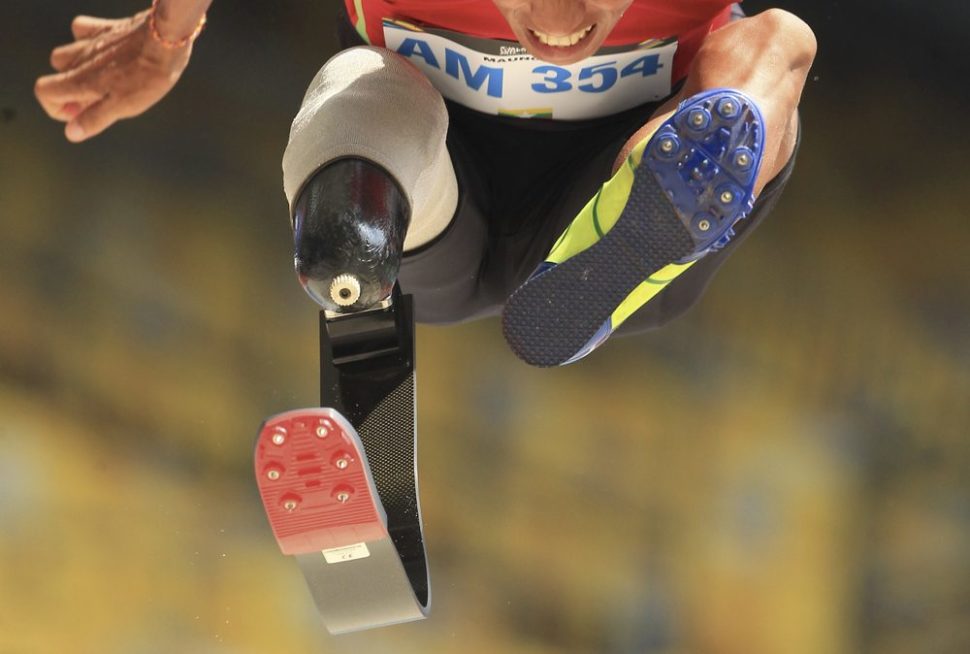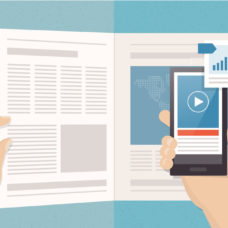Technology is doing many things: democratizing, automating, streamlining, and more. Because of these, even those among us who are disabled can engage industries that would have been impossible in the past.
With the disruption of FinTech, MedTech, and all kinds of startups, humanity is in a unique place. Those of us with bodies or minds that aren’t considered “normal” can use tech to bridge these gaps. From cochlear implants to robot appendages, tech is one solution to Ableism.
Beyond things like cochlear implants and iPhones, how is tech closing the Ableism gap?

You Might Be Wondering: What is Ableism?
Ableism, as with many isms, refers to a group of people who act a certain way. Those who are “able” or “able-bodied” do not have any mental or physical abnormalities. As such, they can go through life without many needs outside the ordinary.
They can use stairs, drive, listen to music, handle stress without having a panic attack, etc. Due to the fact that many disabilities are invisible, it can be difficult to tell when you are being ableist.
Those with disabilities, mental or physical, can experience unfair prejudice due to their disabilities. Ableism is exactly that. No matter the cause, accident or by birth, disabled folks don’t deserve to be mistreated because they are different.
This also extends into how some able people treat those with disabilities as inferior or fragile. They are people, just like you and me, and — believe it or not — more people than you think are disabled. They go through a world designed for able and “normal” people.
That’s why various startups and individuals are using tech to bridge these ableism gaps. Related to biohacking, things like exoskeletons and even phone apps are changing the way disabled people can live their lives.
6 Ways Tech Bridges the #Ableism Gap in Everyday LifeClick To Tweet1. Exoskeletons and Bionics Can Bridge Physical Gaps
When the first trailer for Pacific Rim 2 dropped, we wrote an article about it. We expressed our obvious and brimming excitement about Kaijus and giant robots. But, we also mentioned how companies like Hyundai are developing exoskeletons.
However, exoskeletons are so much more than just enhancements for normal, able-bodied folks. For those born with disabilities or victims of an accident, exoskeletons are the future.
California startup SuitX developed the Phoenix, pictured above. It is a wearable robot suit that augments a wearer’s movements. While it is not the only one of its kind, it is only 27 pounds, modular, and relatively affordable compared to many other robot suits on the market today.
This means that it can be used for a wider variety of physical disabilities and for a wider audience. But, wearable tech is not the only thing helping bridge physical gaps.
Doctors are pairing nerve reversal surgery with bionics, too. Biohacking is the new black y’all.
2. Robots Can Help People Who Suffer From Various Illnesses
You might remember this episode of Bob’s Burgers which touched on the subject or, you might remember our article on how robots are helping people attend school.
Read More: Can’t go to School? No Problem! Send a Robot Instead
The Norwegian startup No Isolation created the robot AV1 to help sick or ailing children to attend school and keep up with their classes and friends. The robot boasts the title of “the world’s first telepresence robot to help children with long-term illness stay connected with their peers.” The intent was to end loneliness.
While the intent behind AV1 is to provide aid for sick children, the uses of this robot go far beyond this initial impetus.
Some of you may be familiar with Agoraphobia or the fear of the outside. It is profiled well on the show Shameless and it can last decades, inhibiting normal living. While there are many therapy techniques for agoraphobia, perhaps AV1 is one more tool.
Beyond that, it could help with emotional support in the same way animals do. Let’s just hope no one flushes their AV1 down the toilet to get on an airplane.

3. 3D Printing Democratizes Medicine
In the same way that 3D printing enables insanely cool cosplays, it also helps prosthetics. What does that mean? That not only is everything more readily available and customizable, it is also cheaper.
Last year, I covered a story of how doctors repaired a woman’s spinal cord with a 3D-printed segment. It was, in fact, the world’s longest titanium implant at 14 cm/5.5 inches.
3D printing also makes it easier to aid disabled animals, too. This turtle had a gap in its shell, so scientists printed a brace. As the turtle grows, the brace can be refitted and reprinted to fit.
This isn’t quite biohacking, but it does mean that, if an accident occurs, a disability doesn’t mean devastation. The availability of 3D printing also reduces some costs of living as a disabled person.
4. Autonomous Cars Are Good for More Than Your Commute
By now, many people have broken into the autonomous cars market. From Google to NVidia to Volkswagen and more, driverless cars can help abled and disabled people alike. But, there is another kind of car in development: a car for the blind. Yes, really.
Dennis Hong, an engineer who created “seven species of robots”, is also working on a car for the blind. The car works by using several computer systems integrated with sensors and cameras. This way, the vehicle can deliver sensory input a blind person can interpret, such as vibrations.
As Mashable mentions, the practical applications of this method are far from ready to ship. But the research involved is exciting and more safety features on cars is never bad.
Reducing the chances of an accident and helping bridge the Ableism gap seems like a win-win. Hopefully, this concept doesn’t devolve into some biohacking argument like the Cars discourse on Jalopnik.
5. The Quadstick Lets You Play Video Games With Your Mouth
This one has to be one of the coolest things I have ever seen.
I remember reading a story in college about a man who played Diablo with his mouth. He was a paraplegic and used something called The Joust to play Diablo.
His name is NoHandsKen and he used sipping and blowing to move. While I couldn’t find a device called The Joust, I did find The Quadstick. It also turns out that NoHandsKen is one of many disabled streamers.
Similarly to NoHandsKen, PUBG streamer RockyNoHands is also paralyzed, using the Quadstick and his mouth to play games. Profiled in PCGamer in 2017, Rocky said he finds pc gaming more accessible for disabled users.
This invention definitely makes pc gaming more inclusive. It bridges the ableism gap for those unable to wield a controller or master a keyboard and mouse. But it isn’t the only way disabled gamers can make the most of the experience.
Brolylegs, the top-ranked Chun-Li player in Ultra Street Fighter IV, uses his face to play. You can also find more resources on console accessibility features written by Philip Hoare.
Read More: The Disabled Gamer’s Manual
Rather than becoming disabled via an accident like RockyNoHands, Hoare was born with Spinal Muscular Atrophy (SMA). Using his experience as a disabled gamer, he breaks down consoles, PCs, and VR accessibility features.
There is even a handbook for more inclusive game design from the AbleGamers Foundation. Who knew? Maybe the next phase is a little biohacking. Cybernetic eyes are cool (until they get hacked at least).
6. Phone Apps & Wearable Tech Helping Disabled People
Many people may be aware of something called the cochlear implant. If you’re like me, you also had to watch The Miracle Worker at least five times in middle school. That means you know about Braille — a tactile language for visually impaired people.
New phone apps and wearable tech are catapulting off this tradition.
The Dot is a wearable Braille smartwatch that helps you access messages, read notifications, and more. It can be used for everyday tasks or as an educational device. It is also similar in size to regular watches.
The app AXS Map uses crowdsourcing to map information about and locations of wheelchair-accessible ramps and restrooms. Apps like this can help prevent an accident and make life just a bit easier.
Another app designed to help disabled people is Assist Mi. The tool allows disabled people to access “everyday goods and services” for greater independence. This means help getting to work, help with grocery shopping, and other everyday tasks.
Also: Liftware. This attachable handle self-stabilizes, making it a useful tool for people with motion disorders. This gadget can stabilize up to 70% of motor disruption. In fact, they have two models: the Liftware Steady™ for tremors and the Liftware Level™ for leveling.
It isn’t quite biohacking, but it certainly is a cool gizmo with a great purpose.
As technology progresses ever-further, it’s clear that the ableism gap is coming close to vanishing in the modern world. Exoskeletons, 3D printed body parts, and cars for the blind seem to be just the beginning of the developments that we will see over the coming years.



















Science and technologies have a great impact on disabled people. Keep up the good work for all developers 😀